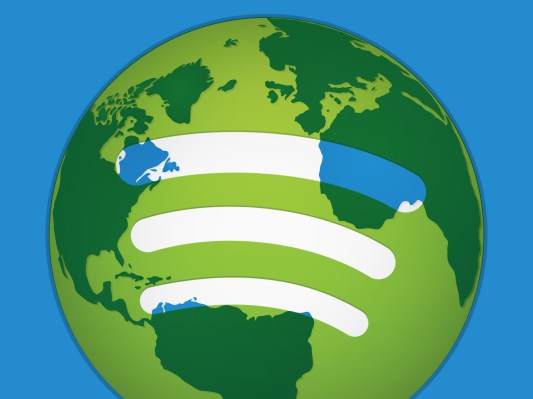Spotify, the music streaming service that is tipped to be soon in line for an IPO, has today announced that it now has 15 million paying users, and 60 million subscribers overall. To put this into some context, two months ago, the company said it had 12.5 million paying users out of 50 million subscribers. Both numbers indicate that Spotify is not moving the needle yet on its proportion of paying users — it’s holding steady at 25%, but nor is it dropping as the service grows.
There are other signs that Spotify may be gearing up for a public listing. We’ve heard, anecdotally, that Spotify is quietly recruiting people that could help take the company through an IPO.
Last week, Josh reported that mobile is a bigger driver for the company than ever before, with 52% of all listening now happening on phones and tablets. Just 3% of its users are listening on Spotify’s web player.
The update to Spotify’s subscriber numbers was published in a short blog post from the company. We have contacted Spotify to see if the company can give more detail about geographical breakdown or any other information to elaborate further.
The company charges at a basic rate $9.99 per month per account with that rate varying based on country (in the UK its £9.99/month) and account type (family and so on).
The push to find paying users for music streaming services is not unique to Spotify of course.
The news of Spotify’s growth globally comes at the same time that competitors are working to raise their game as well. Deezer, which was founded in France and initially built its business out everywhere except the U.S., finally made a move into the country at the end of last year. Last week, it took a big step to ramp up its subscribers by buying the Muve music service from Cricket, which is now owned by AT&T.
Muve is one of the biggest paid digital music services in the U.S., with 2 million subscribers at last count. But Deezer is not automatically picking up all of them — they can migrate to Deezer easily but will now have to pay for the service separately from the rest of their phone plan, a reversal of the all-in deal that arguably attracted all those users in the first place.
Meanwhile, Rdio is trying to grow the universe of devices that people can use to access its service as a boost to encourage people to pay for it. The company recently inked deals with Bosch and Jaguar-Land Rover to embed its player in more automobiles, and a swathe of consumer electronics makers and platforms to address the connected home.
The tension between having free and paid users extends beyond the basic need of bringing in more revenues as well. Last year, Taylor Swift caused a lot of waves when she pulled her newest album 1989 and the rest of her catalogue from Spotify, preferring instead to sell it as a download on services like iTunes.
The reason for this was partly rooted in Spotify’s monetization model: Swift and other artists in her camp argue that too much is being given away to people. For his part, Spotify CEO Daniel Ek says Swift was on track to make $6 million this year on the service before pulling her content. A big number for some, but clearly not as much as she could make through other routes.
Overall, Spotify said in November 2014 that more than $2 billion had been paid out to artists and rightsholders.
